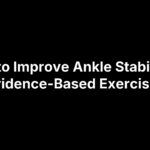Custom orthotics are prescription shoe inserts molded to your exact foot shape, designed to correct mechanics, redistribute pressure, and—most important—dial down stubborn pain from plantar fasciitis, flat feet, and other common culprits. A professionally made pair typically runs $300–$800 and is ordered through a podiatrist or full-service clinic such as Achilles Foot and Ankle Center, which can bill insurance and fine-tune the fit.
In the guide that follows you’ll see how these devices work, who benefits most, what they really cost, and the pros, cons, and care steps every wearer should know. By the end you’ll have the clarity to decide whether custom orthotics are worth lacing into your life.
What Are Custom Orthotics? Types & How They Differ From Store-Bought Inserts
Orthotics are external devices you slip inside your shoes to guide the way your foot meets the ground. Over-the-counter (OTC) insoles you grab at a drugstore are made in bulk to an “average” foot shape. Semi-custom products go a step further by heat-molding generic shells to your arch at home. Prescription or “custom” orthotics, however, start with a 3-D impression—plaster casting, digital scan, or pressure plate—that captures every contour of your foot. A lab then mills or 3-D prints the shell from polypropylene, EVA, carbon fiber, or a hybrid, adding posts, pads, and top covers according to the podiatrist’s exact specs.
Because the device mirrors your unique structure and gait, custom orthotics for foot pain can realign joints and off-load hotspots that prefab inserts simply can’t match.
| Feature | Custom Orthotic | OTC Insole |
|---|---|---|
| Fit accuracy | Exact 3-D match | One-size range |
| Materials | Medical-grade polypropylene/EVA/carbon fiber | Foam or gel |
| Durability | 2–5+ years | 3–6 months |
| Clinical oversight | Exam, prescription, follow-up | None |
| Cost (pair) | $300–$800 | $25–$60 |
Functional vs. Accommodative Orthotics
- Functional: Thin, rigid shells that adjust excessive pronation/supination, ideal for plantar fasciitis, shin splints, knee or back pain.
- Accommodative: Softer, pressure-redistributing devices for diabetic ulcers, arthritis, or severe bunions; often feature extra cushioning and wider toe boxes.
Key Features Only Available With Custom Devices
- Precision arch contouring and heel cups for stable rear-foot control
- Forefoot “posting” to balance limb length or metatarsal alignment
- Metatarsal pads, Morton’s extensions, or dancer pads placed millimeter-perfect
- Sport-specific tweaks—carbon fiber for runners, shock-absorbing EVA for hikers—prescribed by your podiatrist
How Custom Orthotics Relieve Foot Pain: Biomechanics & Common Conditions
Every step sets off a chain reaction from heel strike to toe-off. If the foot rolls too far inward (over-pronation) or stays rigid and tilts outward (supination), joints above it twist and soft tissue is forced to absorb extra load. Custom orthotics for foot pain change that physics lesson in your favor. By seating the heel in a deep cup, propping the arch at the exact height it collapses, and adding forefoot “posts” to level the big-toe joint, the device re-centers your leg over the foot. The result: ground-reaction forces are spread over a larger surface area, pressure peaks drop, and muscles fire in a more efficient pattern.
Imagine a thermal pressure map. Before orthotics the graphic shows angry red zones under the heel and ball, meaning stress exceeds healthy limits. After fitting, those reds fade to yellow and green as force redistributes toward the mid-foot and outer columns. Patients usually feel the difference within days—less morning heel pain, reduced burning in the forefoot, and smoother push-off when walking or running.
Conditions That Respond Well
- Plantar fasciitis & heel spurs – morning stab becomes a dull ache or disappears
- Flat feet & fallen arches – improved endurance, fewer shin splints
- High arches & metatarsalgia – burning under the ball eases
- Morton’s neuroma – tingling between toes subsides
- Bunions & big-toe arthritis – joint rub is off-loaded
- Achilles tendinopathy, knee or low-back pain linked to poor foot mechanics – strain decreases as alignment improves
Evidence & Expert Consensus
Do custom orthotics help with foot pain? Yes—when they’re prescribed for a clearly diagnosed mechanical issue. The American Podiatric Medical Association and Cleveland Clinic cite dozens of studies showing significant pain reduction and functional gains, especially for plantar fasciitis and over-pronation disorders. Caveats: benefits depend on accurate casting, quality materials, and a short break-in period; they’re not a cure-all for systemic disease or acute fractures. Regular follow-ups ensure the device continues to match your gait as it changes over time.
Pricing Breakdown: Custom Orthotic Costs, Insurance, and Long-Term Value
Sticker shock is real—yet a pair of well-made custom orthotics for foot pain usually costs less than a year of weekend lattes. Across the U.S. you’ll pay $300–$800 per pair; clinics in Central Virginia typically land in the $400–$650 range depending on casting tech, shell material, and how many follow-up tweaks are bundled in. Keep in mind you’re buying a medical device built to last several years, not a disposable foam insert.
What You Actually Pay
Most practices quote a package price, but the bill is really a handful of line items:
| Invoice Item | Low | High |
|---|---|---|
| Biomechanical exam & gait analysis | $50 | $150 |
| 3-D casting/foot scan | $40 | $100 |
| Fabrication of orthotics (pair) | $200 | $500 |
| Initial fitting & break-in visit | Included | $75 |
| Adjustment visit (30–90 days) | $0 | $50 |
| Second pair discount (optional) | –10% | –30% |
Tip: ask if your clinic amortizes follow-up visits into the fabrication fee—many do.
Insurance & FSA/HSA Coverage
Does insurance cover custom foot orthotics? Sometimes. Most insurers reimburse when:
- A podiatrist writes a prescription citing ICD-10 codes (e.g., M72.2 for plantar fasciitis).
- The claim uses HCPCS code
L3000(rigid) orL3020(flexible). - You’ve met the annual deductible.
Boost approval odds by attaching the doctor’s letter of medical necessity, itemized receipt, and photos of the devices. If coverage is denied, pay with FSA/HSA dollars to gain a pre-tax 25–35 % discount.
Cost-Benefit Calculation Over 3–5 Years
A single custom pair lasting four years at $550 nets $138 per year. Compare that to:
- OTC insoles: $40 x 4 replacements a year x 4 years = $640
- Physical therapy: $50 copay x 10 sessions = $500
- Lost workdays (average wage $200/day): 3 days = $600
Simple ROI formula:
ROI = (Avoided Costs – Orthotic Cost) / Orthotic Cost
ROI = ($640 + $500 + $600 – $550) / $550 ≈ 2.1 or 210%
Bottom line: investing in a quality custom device often pays for itself several times over while keeping you comfortably on your feet.
Potential Downsides, Myths & Who Should Avoid Them
Even a perfectly prescribed device can feel awkward at first. Your body is learning a new alignment, so expect minor aches in the arches, calves, or even knees for the first one to three weeks. Blisters can crop up if the top cover is stiff or your shoes are too shallow. Most discomfort fades as tissues adapt, but real pain is a sign something needs tweaking.
“Negatives of orthotics” explained
- Break-in soreness: normal for 7–14 days; ease in by adding an hour of wear daily.
- Added shoe weight or bulk: true for some soft accommodative models, but functional shells are usually thin and light.
- “They weaken your arches”: myth. Studies show intrinsic foot muscles remain active; the device simply guides motion.
- Permanent dependence: you can always remove them—symptoms dictate usage.
- When to flag your podiatrist: sharp heel pain, numb toes, or pressure marks that don’t improve within a week.
Contraindications & red-flag scenarios
- Severe peripheral neuropathy or poor circulation without close medical supervision
- Open sores or unhealed surgical wounds on the foot
- Rapidly growing children not scheduled for frequent reassessment
- Acute fractures or infections that require immobilization, not shoe inserts
If any of these apply, hold off on custom orthotics and seek targeted medical care first.
How To Get Professionally Fitted Orthotics: Step-By-Step Process & Provider Options
Getting custom orthotics isn’t a grab-and-go purchase; it’s a mini project that starts with a medical diagnosis and ends with a follow-up tune-up. Here’s the typical sequence—picture a simple flowchart marching from left to right:
- Initial exam & history →
- Standing and walking gait analysis (video or pressure plate) →
- 3-D casting or digital foot scan →
- Lab fabrication (7–14 days) →
- In-office fitting and shoe check →
- Break-in period with progress call →
- Adjustment visit at 2–4 weeks.
A full-service practice such as Achilles Foot and Ankle Center handles every arrow in-house, often offering same-day scans and direct insurance billing for Central Virginia patients.
Podiatry clinic vs. online direct-to-consumer vs. retail kiosk
| Option | Accuracy | Medical oversight | Turnaround | Typical Price |
|---|---|---|---|---|
| Board-certified podiatrist | Highest (cast/scan) | Full exam, scripts, follow-ups | 1–3 weeks | $400–$800 |
| Online DTC kit | Moderate (foam box) | E-mail questionnaire | 2–4 weeks | $150–$300 |
| In-store kiosk | Low (pressure mat) | None | Same day | $60–$100 |
Clinics cost more, but you gain diagnostic certainty, insurance codes, and free adjustments—key for stubborn foot pain.
Questions to ask before committing
- What credentials and lab do you use?
- Which materials are available for my activity level?
- Is there a break-in schedule and warranty?
- How much do modifications or a second pair cost?
- Will you help with insurance paperwork?
Having clear answers ensures your investment supports every step you take.
Care, Break-In & Replacement Tips to Maximize Lifespan
Treat your new inserts like any other piece of sports equipment: break them in gradually, keep them clean, and know when they’re past their prime. Most users need 7–14 days for tissues to adapt, and a well-maintained pair can last several years—saving both feet and wallet from avoidable pain.
- Day 1–2: wear 1–2 hours at home
- Day 3–5: double the time and add light walking
- Day 6–10: full workday, low-impact workouts
- Day 11+: normal use; schedule tweak visit if soreness persists
Cleaning & hygiene
Remove the orthotics weekly. Hand-wash with mild soap, rinse, and air-dry flat—never in direct heat. Use moisture-wicking socks and rotate shoes to cut odor-causing bacteria. A light spritz of 70 % isopropyl alcohol keeps top covers fresh.
When to adjust or refurbish
Book a check-in if you notice new hot spots, compressed cushioning, or a shell that rocks on a flat table. Typical milestones: 2–4 weeks post-delivery, six months, then annually.
Replacement timing & recycling options
Average lifespans: EVA 12–24 months; polypropylene 3–4 years; carbon fiber 5 + years. Replace sooner if cracks appear or pain returns. Old devices can be donated to medical missions or repurposed as gardening kneelers—anything that keeps them out of the landfill.
Living With Orthotics: Everyday Hacks For Comfort
Sliding custom orthotics into your routine shouldn’t feel like a science experiment. A few strategic tweaks—from smarter shoe choices to on-the-go habits—keep the devices working and your feet blissfully quiet.
Footwear compatibility
- Pick shoes with removable factory insoles and enough depth; go up half a size if the heel rubs.
- Aim for a firm heel counter and minimal internal seams that could chafe the orthotic’s edges.
- For dress shoes, look at “orthotic-friendly” loafers or low-profile shells the lab can grind thinner.
- Runners: stability trainers (Brooks Adrenaline, ASICS GT-2000) usually accept full-length inserts without crowding the toes.
Activity modifications
- Ease back into running: alternate orthotic days with non-impact cross-training the first two weeks.
- Add calf and intrinsic-foot strengthening (towel curls, heel raises) to complement the mechanical support.
- Hikers and court-sport athletes should pack blister pads until confident hot spots are gone.
Travel & work tips
- Keep a second pair in your gym bag or desk to avoid the “forgot-my-inserts” scramble.
- At airports, place orthotics in the bin with shoes to sail through security without questions.
- Rotate between two supportive shoe styles during long conferences to vary pressure points.
Key Takeaways & Next Steps
- Custom orthotics reshape foot mechanics, easing chronic pain from plantar fasciitis, flat feet, neuromas, and more.
- Ideal for anyone who hasn’t found relief with OTC insoles or who needs sport- or disease-specific support.
- Expect an upfront investment of $300–$800, often offset by insurance, FSA/HSA savings, and years of durability.
- Break them in gradually, clean monthly, and schedule yearly check-ups to keep the fit—and your comfort—on point.
- Red flags like lasting soreness, new hotspots, or visible cracks mean it’s time for a professional tweak or replacement.
Ready to find out if prescription inserts are your missing puzzle piece? Central Virginia residents can book a custom orthotic evaluation with our podiatry team today through the Achilles Foot and Ankle Center appointment portal.






